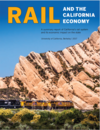 Advancing the Future of Mobility
Advancing the Future of Mobility
As we celebrate 75 years of transportation research, education, and scholarship, I am privileged to serve as director of theUC Berkeley Institute of Transportation Studies.ITS Berkeley continues to assemble top scholars, students, and researchers from departments and disciplines across the campus. They represent the very best that our state, our country, and our world have to offer. They collaborate to study how mobility interacts with people, places, the environment, and society at large.This book offers a reminder of our pivotal contributions to the field and a showcase of our current and emerging research areas, along with the leading researchers behind them. It highlights many of the critical benefits we are delivering toimprove accessibility and equity, enhance safety, bring economic vitality to our communities, and improve people’s abilityto get where they need to go. Going forward, we will continue to build on this legacy, developing insightful analyses,novel policies, and innovative technologies that guide government institutions and meet the future needs and challengesof our changing mobility landscape.While proudly reflecting on our historic legacy and the many firsts we have achieved, I am excited to leadITS Berkeley into a bright future where we continue our work as a premier transportation research organization.The future of mobility is already here, and ITS Berkeley is lighting the way into the next generation.
 A Resilient, Equitable, and Smart Infrastructure System for the Next Century
A Resilient, Equitable, and Smart Infrastructure System for the Next Century
Transportation infrastructure for the next century must be dramatically redesigned in response to the critical challenges related to carbon neutrality, sustainability, equity, and resilience. From planning and impact assessment to project delivery, maintenance, operations and reuse, each component and every step of the transportation value chain is ripe for significant transformation. Tomorrow’s infrastructure will be built with carbon-neutral materials that are durable, smart, and energy efficient. Infrastructure designs must be more elastic and easily reconfigurable to take advantage of unused capacity of existing systems, allow for experimentation with new technologies, and be flexible given that infrastructure expansions may be difficult to achieve due to existing constraints. A forward-looking infrastructure system is also multimodal. It fully integrates emerging travel modes and relies on a different fuel mix to reduce or eliminate its carbon footprint. Renewing the nation’s infrastructure will improve the travel experience, reduce delays, enhance safety, and demonstrate our commitment to an infrastructure befitting an advanced economy. Yet, the value of this infrastructure has reach far beyond its role in enhancing the movement of freight and people. When implemented, the next generation of transportation infrastructure has the potential to revolutionize the nation’s economic vitality and competitiveness while advancing sustainability and equity goals. The announcement of the establishment of Advanced Research Projects Agency-Infrastructure (ARPA-I) opens extraordinary opportunities to support the transformation of transportation infrastructure for the next century. ARPA-I is a strategic initiative with the power to unleash technological innovations with global impact. The following brief outlines key opportunities to support a vision for ARPA-I. Based on decades of research experience at the Institute of Transportation Studies at the University of California, Berkeley, this document focuses primarily on the infrastructure that supports mobility as well as adjacent infrastructures that intersect and/or interact with transportation systems.
Strategic Plan 2019
Technological innovation, urbanization, and increased global economic activity and trade are driving fundamental changes in society and our planet. Technology—from data science to artificial intelligence to the app-driven sharing economy— is altering notions about travel and mobility. At the same time, with rising vehicle miles traveled, increased urbanization, changes in global supply chains, and the growth of e-commerce, the transportation sector remains an important contributor to global greenhouse gas emissions. This sets the landscae for our Strategic Plan.

Inventing the Future of Mobility
The Institute’s history, leadership, and administration are covered in the initial pages, but the main goal of the book is to explore the future of transportation through the initiatives underway at ITS and to present our vision for addressing society’s transportation challenges in the 21st century. You will also find an overview of ITS centers, where our research activities are conducted.
Rail and the California Economy
 With California's population projected to grow by 21 million by 2050, rail transportation will be vital to the state's efficient movement of freight and people, a new research report concludes. Rail and California Economy presents case studies and analysis of freight- and passenger-rail transportation on land use, freeway congestion and the movement of commodities, and those factors' effects on the state's economy.
With California's population projected to grow by 21 million by 2050, rail transportation will be vital to the state's efficient movement of freight and people, a new research report concludes. Rail and California Economy presents case studies and analysis of freight- and passenger-rail transportation on land use, freeway congestion and the movement of commodities, and those factors' effects on the state's economy.
The report was prepared by the University of California-Berkeley and released by the California Department of Transportation (Caltrans).
Intelligent Transportation Systems and Infrastructure
A Series of Briefs for Smart Investments
The last decade has witnessed an unprecedented convergence of communication, control, and sensing that can potentially transform transportation infrastructure and delivery. At the most basic level, efficient operation and maintenance of our nation’s transportation infrastructure requires real time data exchange provided by intelligent transportation system technology. When implemented, these technologies have the potential to revolutionize the nation’s economic vitality by moving people and goods more quickly, efficiently, safely, and at lower cost to consumers. The following briefs outline key policy and investment opportunities to support that vision.



